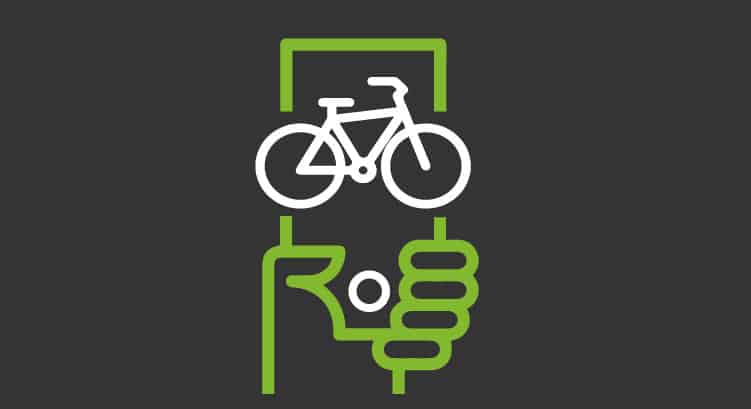Bike sharing services and their monitoring
We can see them on the streets of many cities. They are an ecological and healthy alternative to other means of transport and are becoming more and more fashionable. Haven’t you tried them yet?
Bike sharing is quite trendy. At a time when government teams in big cities are increasingly concerned about environmental issues, bicycles are presented as an ecological alternative and their shared use as a flexible, economical and user-friendly modality. What if we get to know them a little better and then discover what monitoring has to do with all this?
Bike Sharing. How does it work?
It’s not just a way of talking. Bike sharing are a reality in more and more cities, protected by the desire to achieve a healthier life and to have a simple, cheap and ecological means of transport, ideal for short journeys. But how do they work? How much do they cost? Where do they come from? They’re a few questions! Let’s start with the answers.
– Where do they come from?
Although they are now experiencing their biggest boom, bike sharing has been used in some countries for a long time.
Already in 1964 a pilot program was launched in Amsterdam, with not too much fortune: most bicycles ended up being thrown into the canals or stolen.
Years later, in 1974, in the city of La Rochelle (France) began the first successful municipal system of bike sharing, which still survives to this day.
From these experiences, multiple cities, especially in central and northern Europe, established their own shared bicycle programs, spreading the practice around the world at the beginning of the 21st century, which brought hand in hand the creation of various private companies that also began to provide this type of service.
– How do they work?
Bike sharing services are quite heterogeneous, and their functioning depends on the city in which they are established, on whether they are managed by public or private companies or by other factors, such as parking spaces or whether bicycles are conventional or electric.
For example, in a general way, a distinction can be made between bicycles that can be found in fixed car parks distributed throughout the city and those that operate without fixed bases (a more recent modality), so that they are parked at the place where the last user who used them completed their journey (within certain areas set aside for this purpose).
Similarly, there are also different forms of use and payment.
For example, we can find bicycles that use magnetic card systems, or others that are reserved, paid for and unlocked via mobile phone. Their use is usually temporary, almost always for hours or minutes.
– How much do they cost?
As you can imagine, the answer to this question varies depending on the city we are in. For example, in some cities, you can buy monthly bonds that work as a “flat rate” or lower the price of temporary use. We could say that, in cities like Madrid, the price is approximately 3 euros/hour, as we say, that can vary quite a lot depending on the city and the mode of payment and use.
Bike sharing and monitoring
And now you will ask yourselves, what does all this have to do with monitoring? Well, even if it doesn’t seem like it, a lot, and nowadays everything has to do with technology.
The sharpest readers will have already detected the most obvious relationships. A shared bicycle service involves keeping a large number of bicycles on the street, exposed to loss or theft. For this reason, shared bicycles have for some time now often incorporated technologies such as GPS, which are used to avoid this type of incident.
But we’re not just staying here. When it comes to managing hundreds or thousands of bicycles and dozens of stations in an environment of several square kilometres, things get complicated, and all the help that technology can provide seems little.
For example, parking lots often have access terminals that allow users to interact with the bicycle lending system. In addition, the fixed devices (stations or pedestals) that store bicycles also often have technological systems that serve to anchor them, know the number of bicycles available or recharge them in the case of electric bicycles, among other functions.
In addition, many of the shared bicycle services offer their users information about available bicycles, station locations and all kinds of service-related aspects via websites or apps.
And if that’s not enough, companies that manage shared bicycle services also often have the usual equipment that any service company usually uses, and sometimes involve a negligible computer park.
As you can see, something apparently as simple as a shared bicycle service can involve a considerable amount of technology. However, as everyone who uses technology knows, it is not infallible; it is exposed to failures or drops in performance. And this is where monitoring comes into play.
Monitoring systems are responsible for monitoring technology (hardware, networks and communications, or applications, for example) in order to analyse its operation and performance, and to detect and warn about possible errors.
When it comes to monitoring the technology of a shared bicycle service we also enter a specific field of monitoring, what we know as IoT (Internet of Things) monitoring.
One of the things we know about IoT monitoring is that the flexibility of the monitoring systems is something to bear in mind. And if we add to this the variety of devices and services that must be monitored in a shared bicycle service, this leads us directly to Pandora FMS.
Since Pandora FMS is a flexible monitoring software, capable of monitoring devices, infrastructures, applications, services and business processes.
And now you might have questions. Do you have specific needs and want to know exactly what Pandora FMS can monitor? This is easy, you only have to send a message consulting all your doubts through the contact form that can be found at the following address: https://pandorafms.com/contact/
Before doing it and if you want to know more about Pandora FMS IoT monitoring, you can have a look at this link: https://pandorafms.com/iot-monitoring/
Or you can check our main page or get to know some of the clients that already trust Pandora FMS, among which there are multinationals and public institutions from all over the world.
Don’t hesitate to contact our Pandora FMS team and send all your questions, they’ll be happy to help you!
Pandora FMS’s editorial team is made up of a group of writers and IT professionals with one thing in common: their passion for computer system monitoring. Pandora FMS’s editorial team is made up of a group of writers and IT professionals with one thing in common: their passion for computer system monitoring.



















